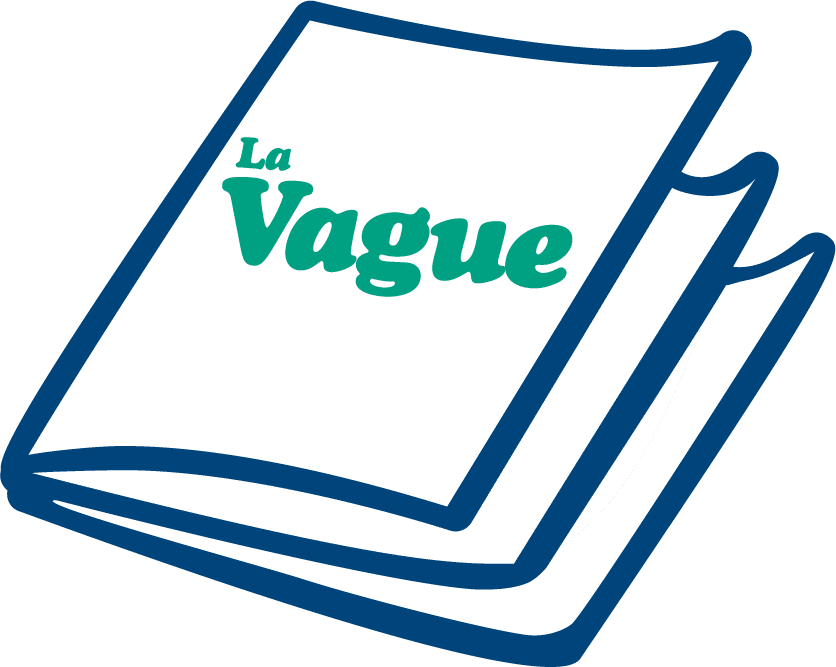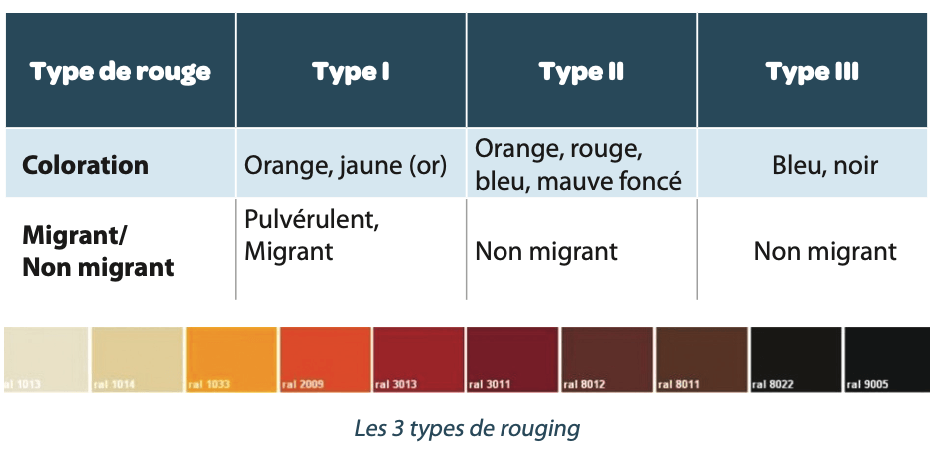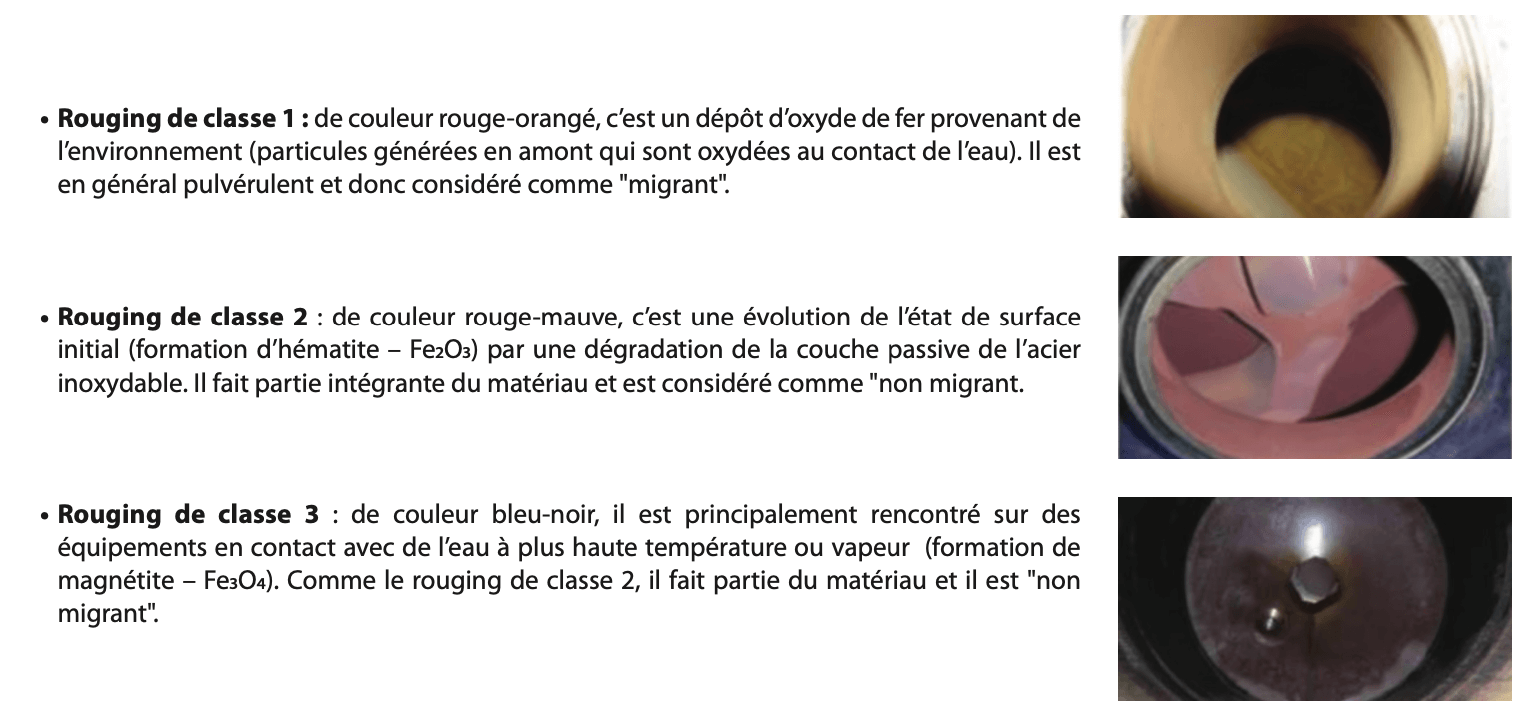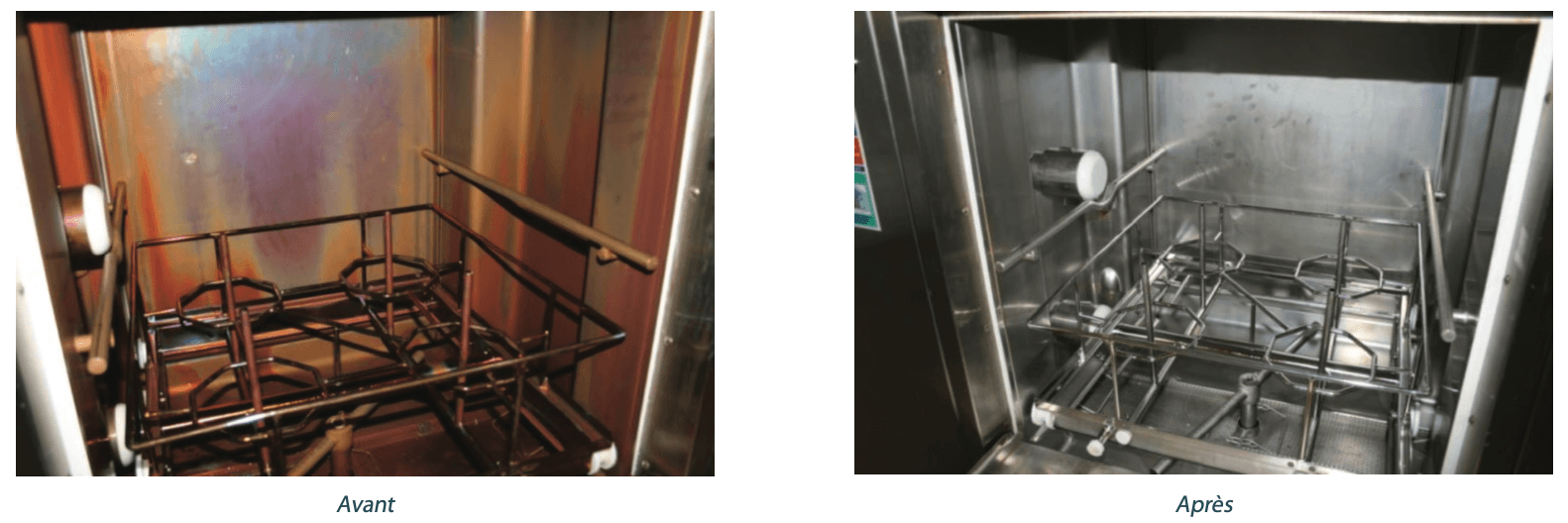Summary
- A review of Rouging.
- Impact des technologies à usage unique sur l’environnement : mythes et réalités.
- Estimation of project costs. Good practices to adopt.
- The Importance Of Automation & Data Management Across Biomanufacturing Workflows.
- Reducing the risk of contamination: a priority for the new generation of aseptic production techniques.
- Automated Parts Washer Virtual Factory Acceptance Test.
- Remote investigations, an option in the health crisis.
A review of Rouging.
Rouging is being detected on pharmaceutical industry equipment with increasing frequency. All sites equipped with a pharmaceutical water installation, clean steam and stainless steel process equipment are confronted with this phenomenon at one time or another. Although this has been known for many years, it increasingly seems a central concern of the pharmaceutical industry.
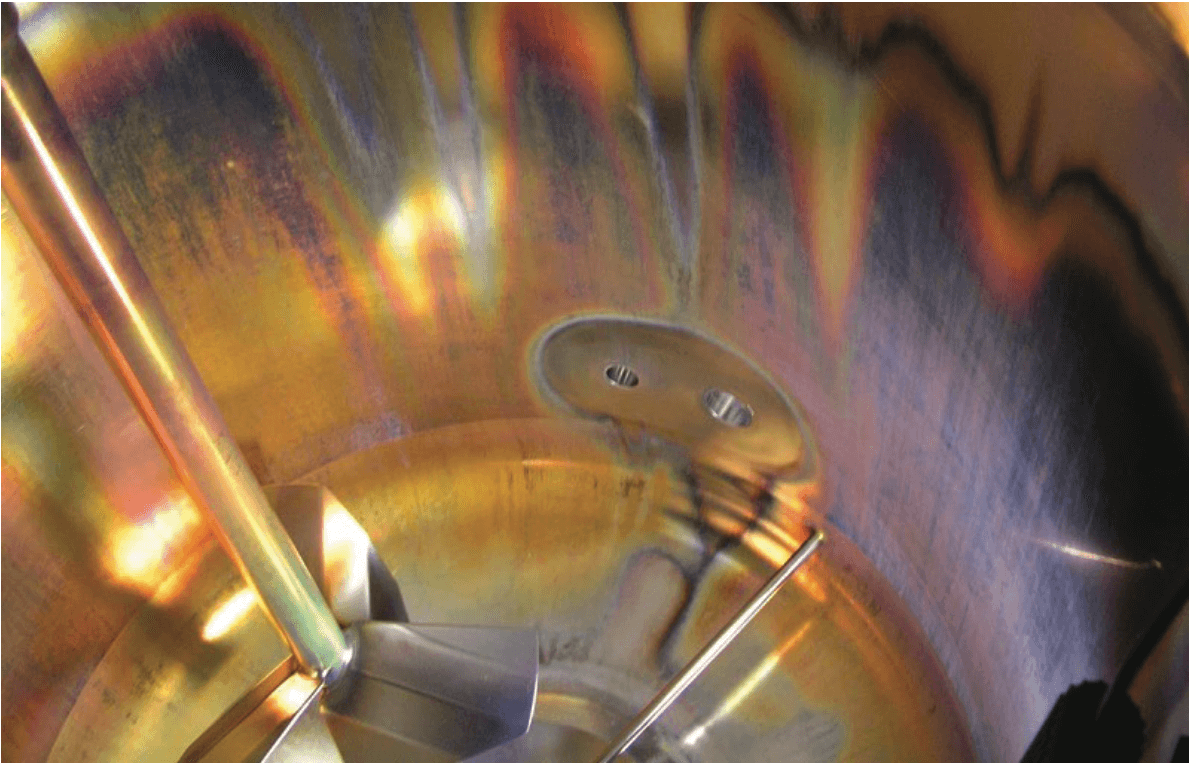
This has led to a better understanding of this phenomenon, an improvement in its preventive management, and progress in the mastery of curative treatments. The aim of this article is to review this phenomenon known as rouging.
1. Current Texts actuels and recap on inspections
Although some official texts (European GMP, FDA, USP, etc.) tackle this subject indirectly by way of water or cleaning, no document deals with it directly. Nevertheless, there are reference texts, and more particularly the ISPE Volume 4 (Water and Steam system) and the ASME BPE 2019. This subject is increasingly addressed during inspections, in particular American and European. The most frequent questions concern:
• The rouging monitoring process;
• The choice of control points;
• The investigation conducted when rouging is present;
• The curative actions implemented when rouging is present.
2. Rouging
a. The necessary elements for the formation of rouging
For rouging to be able to form, several conditions must occur in combination, which are most often associated with stainless steel equipment, a temperature above 60°C, and the presence of water in liquid or gaseous form.
The conjunction of these three elements is common in the pharmaceutical industry, and more particularly in water loops, clean steam networks and equipment that produces these fluids.
Equipment that receives these fluids may also be impacted (tanks, autoclaves, etc.)
b. Classes of rouging
The first studies of rouging were carried out a little more than 30 years ago. In particular, John Tverberg published a study in 19991 in which he described 3 classes of rouging. This study provided an initial basis for the understanding of this phenomenon. These 3 classes of rouging have distinct characteristics.
3. The risks of the presence of rouging
At this time, three potential risks have been identified.
• Visual appearance linked to the clean status of the equipment. This type of risk is normally managed during use of the equipment by Production teams.
.
• Particulate contamination. This is a significant risk as particles (between 0.01 μm and 1 μm) may be carried by the fluid. A filtration step can reduce this risk.
.
• Ionic contamination – elemental impurities. The solubility of rouging compounds is low (Iron and Chrome for example) even non-existent.
.
Given these elements, if rouging is present, it is necessary to carry out a risk assessment according to ICH Q9 and ICH Q3D in order to take account of the feared event (particles, impurities, …) and the potential impact on the final product.
.
a. Role et Responsibility
An interdepartmental structure where each role is clearly allocated, defined and authorized is necessary to control the condition of equipment in relation to rouging.
In general, rouging is managed by the technical departments. Procedures are approved by Quality Assurance. An equipment startup SOP after derouging must be implemented before any production operation. Production teams also have a key role through the regular monitoring of their equipment (tanks in particular).
b. Preventive monitoring and characterization of the rouging
This monitoring is based on an SOP which defines the equipment involved, the control points and the frequencies and types of check. All these choices must be explained.
The main control and identification methods used routinely are:
• Visual inspection. Clean status must always be confirmed before use. In general, this check is carried out by production teams. In addition, it is necessary to put in place a visual check in line with the SOP by persons trained in this type of monitoring (lighting, angle of vision, distance, etc.). This visual inspection allows the progressive formation of rouging to be monitored.
.
• White cloth test.
This test detects whether the rouging is migratory or not. It is important to standardize this test (type of wipe, solvent, positioning).
The main analytical tools used for the investigation and evaluation of impact are:
• Particle counting. This method is defined in European and American monographs. It establishes the particle size distribution and can help to manage any impact on utilities.
• Analysis by ICP-MS. Evaluates the possible presence of elemental impurities based on ICH Q3D.
• Analysis of residues by MEB-EDX (scanning electron microscope with EDX spectrum). The aim is to analyze any residues by spectrometry in order to determine which types of exogenous elements are present.
.
5. Preventing or limiting rouging
The main factors that limit its appearance are the following:
• The surface quality of the equipment
– Stainless steel 316 L (with material certification);
– Surface quality (polishing);
– Welding quality (inerting, shaving);
– Cleanliness of the surface (cleaning, white cloth test).
• Use of the equipment
–Adaptation of the use of “aggressive” Raw Materials;
– Limitation of time of exposure to corrosive agents;
– Maintenance limiting the creation of particles and deposits;
– Possibly, regular preventive treatment during CIP cycles.
.
6. Derouging
Before carrying out a derouging operation, it is necessary to prepare it fully by means of a remedial plan that should include as a minimum:
• The operational plan;
• Preparation of the intervention with the derouging service provider (visit, documents, etc.);
• Monitoring of the derouging operation (traceability of data);
• Steps allowing resumption of activity (report , test, cleaning, etc.).
There are several derouging processes which can be grouped into 3 categories. In all cases, it is necessary to plan a passivation operation after the derouging operation:
• The chemical process.
This is the most frequently-used process which treats the 3 types of rouging. It is particularly suited to tanks and pipework. The aim of this operation is to remove the oxidation layer with more or less acidic mixtures without damaging the surface.
• The electrochemical process. This process is less common. It is suited to the treatment of removable parts. It is more difficult to implement and is preferred for the treatment of rouging of types 2 and 3. The principle is to immerse the part to be treated in an electrolyte bath traversed by a direct current.
• The mechanical process. This process is very rare. It is mainly used when the metallurgical state is impacted. It consists in acting mechanically on the equipment via operations of sanding, polishing, scouring, cleaning by friction with abrasive mixtures. It is necessary to carry out a deep clean after this operation.
Conclusion
Rouging is increasingly a central concern of production sites, of companies specialized in derouging treatment, and inspectors. Currently there is no solution to avoid this phenomenon. However, it is possible to monitor its development and so manage it better, rather than enduring it. Its impact on medicines is to be evaluated and must be studied on a case-by-case basis relying on a risk analysis. There are remedial solutions through derouging operations which allow restoration of the initial surface condition.
A “Guide du Rouging et Dérouging” currently being drafted by the Association A3P Rouging CIG will be circulated at the end of 2021.
Following the success of the 2019 Rouging day, the Association A3P has planned a new day course on this theme at the beginning of 2022. Its aim will be to share our experience and to discuss this phenomenon of rouging.
Meeting on 1st February for our A3P Rouging event. All information www.a3p.org/event/
Share
Membre – GIC A3P Rouging/Dérouging
Reference
[1] : Tverberg, J. & Ledden, J. Rouging of stainless steel in WFI and high purity water systems. in Institute for International Research (1999).


